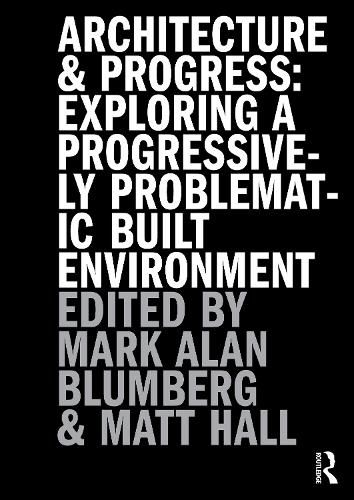Readings Newsletter
Become a Readings Member to make your shopping experience even easier.
Sign in or sign up for free!
You’re not far away from qualifying for FREE standard shipping within Australia
You’ve qualified for FREE standard shipping within Australia
The cart is loading…






This volume proposes an interdependent relationship between progress and obstacles in architecture and the built environment. It challenges the positive notion of progress, and the conception of progress and obstacle as a dichotomy.
For shapers of the world, finding 'the solution' is often a mark of progress that becomes embedded in culture, society, and history. Progress is ever-present. Through the exploration of diverse positions in history, theory, and practice, this book explores the potential utility of the progressively problematic rather than the natural tendency towards the progressively solved. Chapters draw on historic spaces, technological advancement, incorporation of the natural world, alterative production, and the consideration of human experience both sensory and psychological. Challenging the positive connotation of 'progress', the writings also explore reversing the notion of obstacle from disruptive anti-tool to obstacle of utilitarian method, a useful tool, pressing approach, and overarching value system.
This will be interesting reading for upper-level students and scholars of Architecture, Urban Design, Philosophy, and Sociology.
$9.00 standard shipping within Australia
FREE standard shipping within Australia for orders over $100.00
Express & International shipping calculated at checkout
This volume proposes an interdependent relationship between progress and obstacles in architecture and the built environment. It challenges the positive notion of progress, and the conception of progress and obstacle as a dichotomy.
For shapers of the world, finding 'the solution' is often a mark of progress that becomes embedded in culture, society, and history. Progress is ever-present. Through the exploration of diverse positions in history, theory, and practice, this book explores the potential utility of the progressively problematic rather than the natural tendency towards the progressively solved. Chapters draw on historic spaces, technological advancement, incorporation of the natural world, alterative production, and the consideration of human experience both sensory and psychological. Challenging the positive connotation of 'progress', the writings also explore reversing the notion of obstacle from disruptive anti-tool to obstacle of utilitarian method, a useful tool, pressing approach, and overarching value system.
This will be interesting reading for upper-level students and scholars of Architecture, Urban Design, Philosophy, and Sociology.